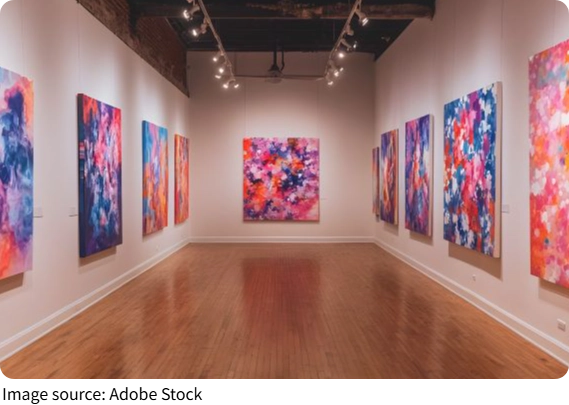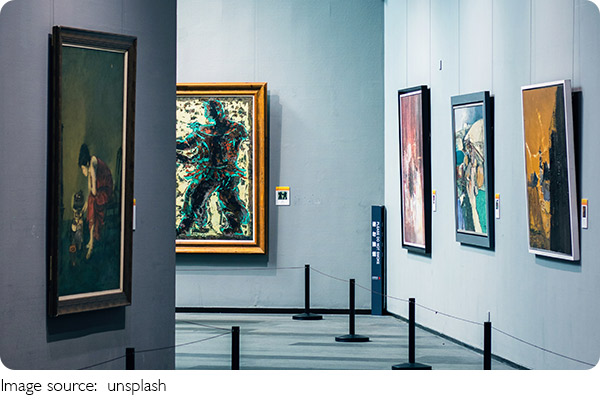Why We "Feel" Shapes

Some people stare at abstract art and feel nothing. Others feel everything. What is it about random shapes, splashes of color, and strange textures that stirs something inside us—even when we can't explain why?
Let's dive into the psychology behind why abstract art can make us pause, think, and sometimes even cry.
Abstract Art: What Are We Looking At?
Unlike realistic art, abstract works don't show us what to think. There are no mountains, no portraits, no everyday scenes. Instead, we get shapes, lines, patterns, and colors. That's it. And yet, somehow, our minds still try to make sense of them.
This is the first psychological hook: we are wired to seek meaning. The human brain naturally looks for patterns—even in randomness. So when we see a red swirl next to a black dot, our mind might turn it into a memory, a feeling, or even a story.
It's Not Logic—It's Emotion
The beauty of abstract art is that it doesn't speak through words or facts. It speaks through emotion. That's where psychology steps in. When we look at abstract art, we're not thinking, "What does this mean logically?" We're asking, "How does this make me feel?"
Neuroscience research shows that when we look at abstract art, parts of the brain linked to emotion and decision-making light up. That's right—abstract art can trigger the same areas that respond to music, love, or a beautiful sunset. It's a personal reaction, not a universal one.
The Role of Memory and Experience
Here's a fun twist: what we feel when we look at a painting often comes from us, not the artist. Our own past shapes our response. A swirl of blue might remind you of the sea, while for someone else, it stirs memories of sadness.
There's no right or wrong reaction. That's the power of abstract art. It allows room for personal interpretation, shaped by everything from our childhood to our current mood. One person might find calm in a messy canvas; another might feel discomfort—and both are valid.
Why Some People Don't "Get It"
Let's be honest: abstract art can be confusing. Some people see it and think, "A kid could do that." That reaction is natural—and it actually says more about how we're trained to view art than about the work itself.
We're often taught that art should "show" something. But abstract art doesn't do that. It asks us to let go of control. For many of us, that's hard. Our brains crave answers. Abstract art offers only questions.
Psychologically, this challenge can feel frustrating—or freeing. People who enjoy abstract art tend to be more open to new experiences and more comfortable with uncertainty. But that doesn't mean others can't learn to enjoy it too.
Color, Shape, and the Subconscious
There's a reason bright, bold shapes can feel energizing or soft, blurred colors can soothe us. Even without knowing it, we respond to visual elements on a deep level.
Studies show that:
- Color affects mood: Red can spark alertness, blue can calm us down.
- Shape carries meaning: Circles feel gentle and safe, while sharp edges can feel aggressive or exciting.
- Space and size matter too: A small dot on a giant canvas can feel lonely. A crowded image can make us feel anxious or overwhelmed.
These responses come from our subconscious. We feel them before we explain them. That's why abstract art can be powerful even if we don't fully "understand" it.
Letting Go of the Need to "Get It"
Maybe the secret to enjoying abstract art is to stop trying to decode its code. What if the goal isn't to figure it out, but to let it make us feel—whatever that feeling may be?
Whether it sparks confusion, curiosity, peace, or even discomfort, abstract art gives us a chance to be more in touch with our emotions. It invites us to slow down and simply experience the moment.

What Do You See?
The next time you're standing in front of a piece of abstract art, ask yourself: What does this remind me of? What emotion does it bring up? And what does that say about me?
We don't need to be art critics to enjoy abstract pieces. All we need is openness—a willingness to feel without needing every answer. So Lykkers, how do you usually respond to abstract art? Let it puzzle you? Move you? Or do you scroll past?
Maybe next time, you'll pause—and feel something unexpected.

 · Photography Team
· Photography Team